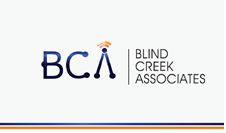Forwarded on behalf of Mathew Fischer. To be discussed..
Thanks Mathew for your contribution.
-Ben Rolfe / BCA
-------- Forwarded Message --------
| Subject: | Re: [STDS-802-11] Fwd: [802.15-GENERAL-LIST] Sub 1GHz coexistence interest group |
|---|---|
| Date: | Mon, 7 May 2018 07:46:09 -0700 |
| From: | Matthew Fischer <matthew.fischer@xxxxxxxxxxxx> |
| To: | Benjamin A. Rolfe <ben@xxxxxxxxxxxxxx> |
| CC: | STDS-802-11@xxxxxxxxxxxxxxxxx |
I was not present for the presentation of the referenced presentations on the simulation results, so i am not certain if there was additional information discussed, beyond what is in the slides that might have provided answers to my questions:
My main concern is that all of the simulations show mixed use cases, but there is no presentation of any baseline for comparison - the comparisons that are made are presumably to scenarios with different conditions instead of to appropriate baselines.
For example, on slide 14 of 19-18-0016-01, there is colored text that suggests that 802.15.4g devices have a reduced packet delivery rate.But what is the comparison on which this conclusion is based?From the slide ordering, one imagines that the baseline to determine that this is a reduced expectation of rate is simply the higher numbers presented in the previous two slides, but in those slides, the simulation parameters are significantly different. I cannot know for certain if this implied relationship is one that the author intended.
For this particular example, regarding slide 14, my opinion is that there are two baselines that need to be examined:
First, note that the simulation parameters for slide 14 are:
80 802.15.4g and 802.1ah nodes (I think that this means 80 x 802.15.4g + 80 x 802.11ah and not 80 of (15 + ah)1 kbps traffic for each type (I believe that this is per STA, which feels obvious, but it should be stated in the slides)100 bytes payload for both types
Note that if there are 80 802.15.4g devices each operating at 1 kbps and with a phy rate of 100 kbps, then due to overheads surrounding the payload symbols, the actual effective throughput is likely less, meaning that rather than an offered load of 80% (1 * 80 / 100), the offered load of the 802.15.4g devices alone is higher than 80 %, perhaps as much as 100 %
Based on the above parameters, i believe that the two appropriate baselines for comparison would be:
1) 160 x 802.15.4g STA and 0 x 802.11ah operating with a load of 1 kbps each and 100 bytes of payload per PPDU
2) 0 x 802.15.4g STA and 160 x 802.1ah STA operating with a load of 1 kbps each and 100 bytes of payload per PPDU
The per STA results for the 80 802.15.4g STA within the simulation described on slide 14 should be compared to the per STA results of baseline 1)The per STA results for the 80 802.11ah STA within the simulation described on slide 14 should be compared to the per STA results of baseline 2)The other results presented in later slides for several variations on the parameters listed above also need pairs of baselines developed in a manner similar to this example.
Also, the slides do not mention what the MAC properties are in the simulator - is there a full MAC implementation for each system, or is the MAC modeled as a theoretical, statistical model which is used to determine average MAC access probabilities for each STA?
Matthew FischerStill a Nice GuyStill at Broadcom Limited
On Mon, May 7, 2018 at 2:44 AM, Benjamin A. Rolfe <ben@xxxxxxxxxxxxxx> wrote:
--- This message came from the IEEE 802.11 Working Group Reflector ---
Hello all presently attending the interim in Warsaw. For those who may have an interest in systems using sub-1GHz bands, there is an interest group this week in 802.19 focusing on coexistence between 802.15.4 and 802.11 systems in the sub-1GHz band. The meeting times are:
Tuesday AM2
Wednesday AM1Background: In January and March, presentations were given in 802.19 providing simulation studies of impacts of 802.11ah and 802.15.4g systems operating in the same radio sphere of influence (SoI). The results are quite interesting, showing that there is potential interference that can severely impact the operation of each service. The purpose of the interest group is to further study the coexistence issues and determine what steps may be taken by 802 WGs to enable and promote positive coexistence,.
If you would like agenda time please let me know and I will allocate time.
thanks and looking forward to interesting discussions!
-Ben
802.19 Sub-1GHz interest group Chair
--
--
Regards,
Ben
Benjamin A. Rolfe
408-332-0725 Mobile
408-395-7207 Office
To unsubscribe from the STDS-802-11 list, click the following link: https://listserv.ieee.org/cgi-
bin/wa?SUBED1=STDS-802-11&A=1
To unsubscribe from the STDS-802-19 list, click the following link: https://listserv.ieee.org/cgi-bin/wa?SUBED1=STDS-802-19&A=1